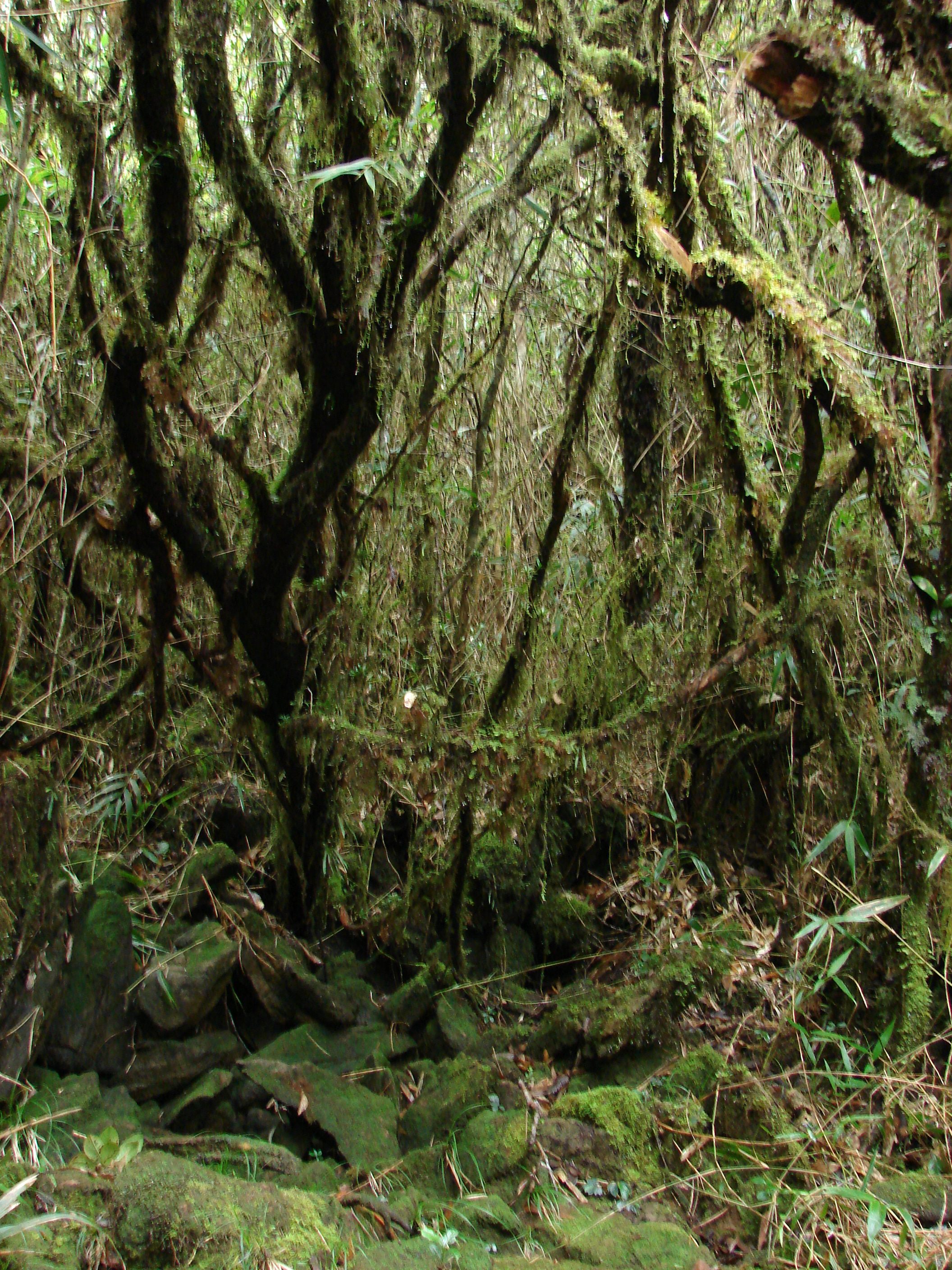Cold, Damp ‘Sky Islands’ Are Hotspots for Unusual Plants and Animals
Exploring an ecological oasis high up on the Philippines’ Palawan Island.

On a clear day, when Mount Mantalingahan isn’t cloaked by rain or fog, it provides a commanding view of the Philippine lowlands and ocean far below. Rising 6,841 feet above Palawan Island, the mountain is steep and isolated. Anyone who makes the climb up will notice that the summit, almost always cold, foggy, and wet, bears little resemblance to the tropical setting below. And that’s exactly why scientists are attracted to it.
Mount Mantalingahan is what is called a “sky island.” Unlike Palawan Island itself, the peak is not physically surrounded by water, but it falls under a broader definition of “island”—any place that is somehow sequestered from its neighbors, and develops an ecosystem all its own.
For researchers, the multi-day hike to the summit is worth it because of the unique environment that has evolved there. Sky islands are known for being hotspots of biodiversity. Larry Heaney, a curator of mammals at the Field Museum in Chicago, learned that years ago, after many seasons of field work in the Philippines. Conventional wisdom holds that tropical lowland rain forests are the best engines of terrestrial biodiversity. That’s true for ants and termites, and for birds and bats, Heaney says. But “it’s not true for earthworms, not true for small mammals, not true for oak trees, not true for orchids, all sorts of things.” For many different groups of plants and animals, he says, peak biological diversity occurs “well up into the mountains.”
The top layers of the Philippine mountains—above hot, muggy rain forest—dip down to around 40 degrees, too warm for for snow or frost, but sufficiently uncomfortable with the constant damp. “We’re talking 12 to 15 feet of rain per year,” Heaney says. “You smell the kind of aroma you have when you’re working in the garden and soil is wet.”
High atop sky islands, he says, the “character in the forest changes completely.” Unlike the volcanic, nutrient-rich earth across much of the country, that mountain soil can be thick with nickel and other metals that discourage plant growth. It’s not uncommon for mountain trees in the Philippines to be just waist-high, even when fully grown.

When he first started working in the higher-elevation forests, Heaney was surprised to encounter stubby oaks and other trees often associated with northern forests. “‘I thought, ‘There’s acorns everywhere!’” he says. “‘What’s the deal with that?’” The slopes include mountain species such as relatives of laurels and myrtles, and carnivorous, insect-eating pitcher plants—shaped like water jugs—that don’t live anywhere else. One of these, the speckled Nepenthes palawanensis, documented in 2010, was named after the mountain itself.
Different plants mean different animals. Just before and after sunset, frogs chirp from pools in the hollow spots of trees. Sometimes leeches drop from branches and squirm toward your eyes. Scores of small mammals paw around tree roots, trying to turn up insects. At lower elevations, termites are everywhere, swarming felled trees. Up there, they’ve all but vanished. “Termites don’t like to be cold and wet,” Heaney says.
Getting to such sky islands isn’t particularly easy for researchers. In the case of Philippine mountains, it involves multiple airports, lots of luggage-toting, a bus, a four-wheeler, and then a serious trek. The reward is a flimsy camp made from tarps draped between bamboo and squat trees. “For people who want to be there, and are really fully engaged in learning about the animals and the places where they live, it’s an awful lot of fun,” Heaney says. “For people who aren’t motivated similarly, it would be absolutely miserable.”
Heaney is a member of the minority that loves it up there. He leapt at the chance to study the summit ecosystem of Mount Mantalingahan, in part because because there was a lot there for him to like: a high, large peak that hadn’t been studied much before. Among many other finds, his team recently described the Palawanosorex muscorum, or Palawan moss shrew, a portly, long-clawed little mammal with long claws that eats the earthworms in the soil.

The unusual ecosystems of sky islands take shape in a few ways. Sometimes, they are the last refuges for species that once had a wider range, but dwindled due to disease, predation, or a changing climate. In other cases, species might migrate there when their former ranges become inhospitable—too hot, for instance, or depleted of food. Heaney and his collaborators speculate that the moss shrew’s relatives may have scampered over a landbridge from Borneo millions of years ago. While they’re not sure exactly how it arrived, its diet and physiology—it helps to be warm-blooded on a chilly mountain—have evolved to help it flourish on Mount Mantalingahan. If a species adapts to a particular mountaintop, the lowlands could be, by comparison, as inhospitable and unwelcoming as the ocean around a traditional island.
All the interesting ecology up there (and the fact that its slopes and soil aren’t much good for farming) helped get portions of Mount Mantalingahan designated as part of a protected landscape in 2009.
Sky islands top mountains all over the world. More super-sized pitcher plants—including one named for David Attenborough—are endemic to other Philippine peaks. Dozens of birds, amphibians, and mammals can only be found in sky-high archipelagos in the Cameroon Highlands in Africa. Isolated ecosystems rise above North American deserts, too, where a plant such as Pringle’s fleabane—a daisy relative—branched out into three distinct species on separate sky islands. There’s no end of ecological secrets out there. Or, more accurately, up there.





















Follow us on Twitter to get the latest on the world's hidden wonders.
Like us on Facebook to get the latest on the world's hidden wonders.
Follow us on Twitter Like us on Facebook